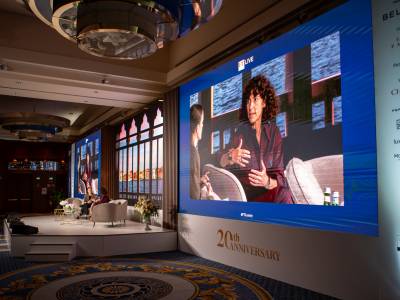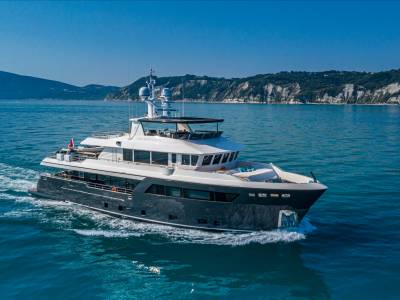You have a great concept. A brilliant chef. Rock solid financiers and reliable business partners who are falling over themselves to pay Bond Street rents (which can reach £2,250 per square foot.) All you need is a stand-out site in which to realise your dreams, but without a “fixer” they won’t materialise. Anyone wanting to open a fashion emporium, a restaurant or a luxury flagship in central London has no choice but to venture into the murky shadows of the property world where landlords, agents and guardians of great estates operate a semi-feudal system that is indecipherable to almost anyone except themselves.
It’s bewildering enough for Londoners, but for international brands it’s especially tough. In October, Italian luxury linen maker Frette opened its first European flagship in Mayfair. Frette CEO Hervé Martin started hunting two years ago in central London with the aid of the commercial property consultants CBRE. After much traipsing, they saw a site on the corner of Adam’s Row and South Audley Street, which had suddenly become vacant, and committed almost on the spot. Frette was then put through a strict vetting process by the landlord, Grosvenor. “We were really tested,” says Martin. “We had to explain our concept and our intentions; that we were giving priority to London over any other European city, that we wouldn’t open 10 more stores in the city in the next three years, that we wanted that area of Mayfair, and that area only.”
Martin spent 10 years within LVMH as managing director of Louis Vuitton and as CEO of Kenzo, and is well versed in opening luxury boutiques in major world cities. For him, London is the toughest of them all. “London landlords are in a very powerful position. Leases are long, most clauses in the contract work in their favour and you can’t do anything without their consent,” he explains. “And it’s so expensive before you even get to this rather mysterious game called ‘rates’, which can increase almost overnight.”
Joanna Lea, director of retail at Grosvenor’s London estate, sheds light on its vetting process: “As stewards of Mayfair and Belgravia, we take a long-term, holistic view. We try to ensure that all of our tenants complement one another and add something of value to the area and the community.” Other estates such as Crown (which owns Regent’s Street and St James’s), Cadogan (Sloane Square and Knightsbridge) and Howard de Walden (Marylebone) take a similarly rigorous curatorial stance.
Their vigilance has paid off. The past 20 years has seen the birth of buzzy shopping and dining destinations such as Mount Street, Brompton Cross and Marylebone High Street. Such is the cachet of being on these streets that competition to bag a spot is fierce. Unless you have contacts, you don’t stand a chance. “The estates are run like shopping centres. It’s less about who you are and what you’ll pay rent-wise, rather than whether you can meet their criteria,” says Peter Mace, a partner at estate agents Cushman & Wakefield. Known informally as “Mr Bond Street”, Mace has spent 30 years doing deals for both landlords and tenants on the street, and recently negotiated a record rent of £2,250 per square foot being paid by Swiss watch brand Hublot at number 13/14.
Like most agents at his level, Mace likes to work under the radar, trying to secure sites without competitors knowing. He helps clients understand lease structures, negotiate break clauses and stump up “key money”, the funds needed to purchase a lease. For the past few years, he has assisted in the transformation of Burlington Arcade from a forlorn alley peddling antiques, cashmere and second-hand watches to an upscale destination for jewellers, accessories brands and perfumers (Manolo Blahnik and Lalique arrived this year).
The grand estates are controlling, picky and charge hefty rents, but the alternative is independent landlords, who often have no interest in their neighbourhoods and would sell their grandmothers to the highest bidder. Last year, British chef Jun Tanaka opened his ninth restaurant, called The Ninth, on Charlotte Street. Its CEO Jim Barry recalls: “With an experienced celebrity chef, good funding and my business background, we thought we would be an attractive tenant who would secure a site in six months. It ended up taking two-and-a-half years. Jun spent all his time viewing properties, pitching to landlords, even cooking for them.”
Address to impress: London’s luxury property challenge
19th December 2016
Fashion brands and restaurants crave prestigious locations in the capital, but space is at a premium and securing a perfect site is a cut-throat business.
Barry eventually called on Dean Gambles, managing director of Dean Gambles & Co, which specialises in securing London sites for chefs such as Jason Atherton, Angela Hartnett and Mark Hix. “Without Dean, we would have given up,” admits Barry. “It was only because he got us an early viewing that we managed to secure a site. Many properties don’t even come on to the market. The ones that do have 30 or more parties interested immediately and are invariably snapped up by established names opening their second or third restaurant.”
“Right now, London is the hardest place in the world to set up a restaurant,” says Josh Leon, food and drinks advisor for Grosvenor and a director at real estate company Colliers International. “It’s a perfect storm of strict planning, high demand and not much new space being created.” Gambles, who started out 11 years ago selling kebab shops and Indian restaurants, also points out that Mayfair is “monopolised” by such figures as the businessman Richard Caring and restaurateur and Wagamama founder Alan Yau: “They will bid fiercely for any property within their patch.” Like other agents, he trawls through planning applications in the hope of securing sites before they go to market and has turned to new foodie hotspots such as Shoreditch, Soho, King’s Cross and Borough.
Even when they have secured a site, tenants must be prepared to adapt their concept. “There’s a new phenomenon of global luxury restaurant brands — Zuma, Cecconi’s, Nobu — arriving in London and they’re used to getting what they want,” says Leon. “We warn them that they might not find 6,000sq ft on the ground floor, but 3,000sq ft on the ground and another 3,000 in the basement. They must be flexible.” Next year, Hong Kong’s chic eatery Duddell’s opens in a former church at London Bridge. Gambles spent two years hunting for a site for the two-Michelin-starred restaurant and finally found the “wild card” 6,500sq ft, Grade 1-listed building. Duddell’s will rework its concept to fit the space and its surroundings.
David Rosen, senior partner at The Pilcher Hershman Partnership, has spent 17 years scoping out nondescript office blocks and former industrial buildings and reworking them into attractive, quirky spaces for the creative industries. Mega-dealers Larry Gagosian, Thaddaeus Ropac, David Zwirner, Sir Terence Conran (with the new Design Museum), Skarstedt art gallery and auction house Phillips at 30 Berkeley Square all occupy spaces found by Rosen, and when Cork Street gallery reopens next year it will be filled with his art clients.
Next year, SushiSamba opens a second London offering in Covent Garden. “It won’t be a destination like our first site, Heron Tower — it’s a new interpretation,” says its founder, Shimon Bokovza. “We never thought we would open another space in London, unless it could be very different, and we like the way Capco (Capital & Counties Properties) is rebranding Covent Garden.” Occupying 10,000sq ft, it will be designed by David Collins Studio and is one of a handful of exciting independents transforming the area into a dining hotspot (Petersham Nurseries and the Experimental Cocktail Club also open there next year).
Despite Dragon’s Den-style interrogations, eye-watering cash transfers, ritual fleecings and humiliations, luxury brands still flock to gain a foothold in the capital. “Grosvenor liked our new concept and it deemed us sufficiently distinctive to be seen as a nice addition to the area,” says Frette’s Hervé Martin with relief and gratitude. High financial returns and having a prestigious address clearly make the pain worth it.







